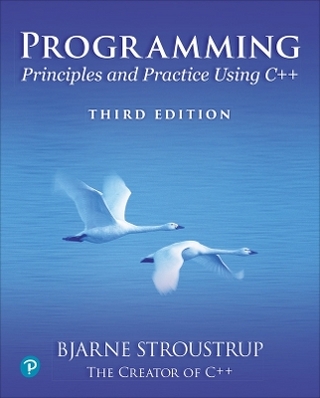
Object Structures
Addison Wesley (Verlag)
978-0-201-63480-8 (ISBN)
- Titel ist leider vergriffen;
keine Neuauflage - Artikel merken
This thoroughly object-oriented book takes the conventional topic of data structures and totally transforms it, leading you through the process of designing software components that are elegant, interchangeable, and reusable. Using Eiffel, the only pure object-oriented programming language designed specifically for software engineering, the book will teach you techniques for designing object structure interfaces and inheritance hierarchies. You will find detailed analyses of all the familiar data structures - arrays, lists, queues, stacks, trees, etc. - but the emphasis is on abstracting these structures to create well-designed, reusable components. You will learn how to create a number of different implementations to accomplish a specific task and analyze the advantages and trade-offs of each. In addition, the book illustrates the Design by Contract component design methodology originally developed by Bertrand Meyer, Eiffel's creator.Numerous exercises and sample applications will help you assimilate all of the information and sharpen your object-oriented programming skills.
Written for conventional programmers who want to learn object-oriented programming through a familiar medium, or more experienced object-oriented programmers who want to improve their skills and techniques, this book will help you gain a deeper understanding of the theory and application of component design and the foundation of object-oriented programming. 0201634805B04062001
Jacob Gore is Assistant Professor of Computer Science at Eastern New Mexico University. Prior to that, he was an Adjunct and Visiting Assistant Professor of Computer Science at the University of Denver and Colorado School of Mines. He has been a programmer, researcher, advocate, and educator in object-oriented technology since 1984. He co-founded ToolCASE Computing, Inc., a software development and consulting firm, and has worked on object-oriented software projects at Hewlett-Packard, AT&T Wireless Services, IBM, and Chevron. He received his B.S., M.S., and Ph.D. in Computer Science from Northwestern University. 0201634805AB04062001
I. INTRODUCTION. 1. Object Structures. The Study of Object Structures. Objects. Object Structures. 2. Objects and Classes. Objects and Classes in Eiffel. Requesting a Feature of an Object. Inside, Outside. Summary. Exercises. 3. Pairs. What a PAIR Is and What It Does. How a PAIR Does What It Does. Sifting Out the Inside to Get the Outside View. Testing Class PAIR. Summary. Exercises. 4. Subclasses and Subcontracts. A More Sophisticated PAIR Structure. The "Can Act As a" Relationship. Subcontracting: Obligations of the Heir. When Subclassing Should Not Be Used. What PAIR Should Do As Subcontractor to ANY. Specifying Types with the like Keyword. Types, Classes, and Assignment. Summary. Exercises. II. LINEAR OBJECT STRUCTURES. 5. Arrays. What an ARRAY Is and What It Does. One Way for an ARRAY to Do What It Does. Summary. Exercises. 6. Lists. What a LIST Is and What It Does. How a LIST Does What It Does: Multiple Implementations. An Implementation Using an ARRAY. Testing List Implementations. Performance of the Array Implementation. Summary. Exercises. 7. Linked Implementations of Lists. Linked Implementations. Singly vs. Doubly Linked Lists and Their Class Hierarchy. Implementing a Singly Linked List. Factoring Out Implementation Commonalities. Choosing an Implementation: Performance Analyses. Summary. Exercises. 8. Stacks. What a STACK Is and What It Does. How a STACK Does What It Does. Using a LIST to Implement a STACK. Using an ARRAY to Implement a STACK. A Singly Linked Implementation of STACK. Choosing the Best STACK Implementation for a Given Use. Who Needs It? Summary. Exercises. 9. Queues. What a QUEUE Is and What It Does. How a QUEUE Does What It Does. Using a LIST to Implement a QUEUE. A Singly Linked Implementation of QUEUE. Using an ARRAY to Implement a QUEUE. Choosing the Best QUEUE Implementation for a Given Use. Who Needs It? Summary. Exercises. 10. Application: Calculators. Postfix Notation (RPN). Converting from Infix to Postfix. The Design. The Implementation. Exercises. III. SORTING AND SEARCHING. 11. Dictionaries and Associations. Dictionaries. The DICTIONARY Object Structure. Associations. The Contract for DICTIONARY. Linear Search Implementation. Performance Analysis. Summary. Exercises. 12. Sorting. Sortable Lists. Insertion Sort. Bubble Sort. Selection Sort. Summary. Exercises. 13. Faster Sorting. Merge Sort. Quick Sort. Space Complexity. Choosing the Best Sorting Algorithm for a Given Use. Summary. Exercises. 14. Faster Dictionaries. Binary Search.
| Erscheint lt. Verlag | 29.4.1996 |
|---|---|
| Verlagsort | Boston |
| Sprache | englisch |
| Maße | 188 x 235 mm |
| Gewicht | 830 g |
| Themenwelt | Mathematik / Informatik ► Informatik ► Programmiersprachen / -werkzeuge |
| Informatik ► Software Entwicklung ► Objektorientierung | |
| ISBN-10 | 0-201-63480-5 / 0201634805 |
| ISBN-13 | 978-0-201-63480-8 / 9780201634808 |
| Zustand | Neuware |
| Haben Sie eine Frage zum Produkt? |
aus dem Bereich


